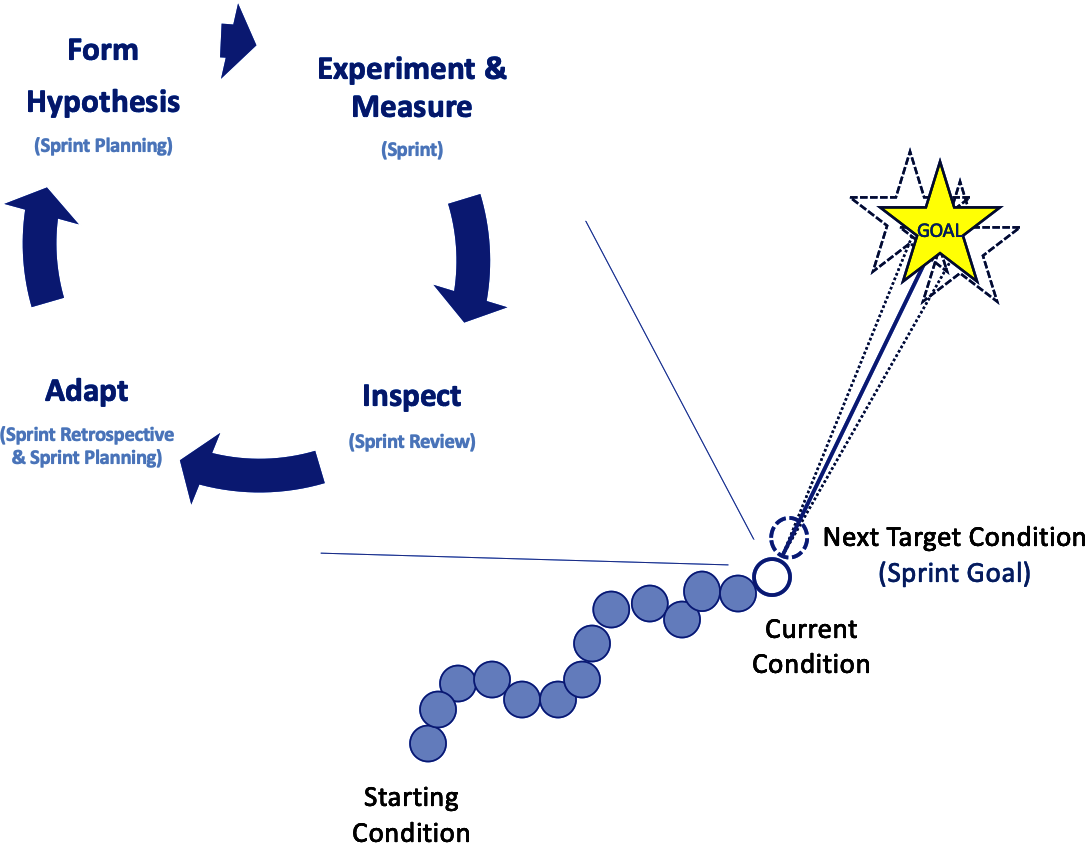Chapter 83. Scrum Is Also About Improving the Organization
Kurt Bittner

Scrum is commonly considered to be a product delivery framework, and for good reason: Scrum helps teams to deliver a working, “Done” product Increment every Sprint. And there is nothing wrong with thinking of it in this way—frequently delivering value to customers is one of the most important benefits a team can achieve using Scrum.
But only focusing on product delivery actually sells Scrum short. Scrum is really a continuous improvement framework that has releasable product Increments as one of its more visible outcomes. But its real power is in helping both the team and the organization continuously improve their ability to deliver value to customers.
As a continuous improvement framework, Scrum focuses on three aspects:
- Improving the product
Ideally, each Sprint delivers a working version of a product that reflects the priorities identified by the Product Owner. Working in a series of Sprints, the Scrum Team gradually but continuously improves the value delivered by the product.
- Improving the Scrum Team
Every Daily Scrum is an opportunity for the Development Team to identify adjustments in what the team is working on and how it is working. The Sprint Retrospective takes this a step further, helping the Scrum Team to inspect, adapt, and improve its way of working in the next Sprint.
- Improving the organization
The product is a means by which the organization delivers value to its customers. Over time, products and services come and go as the organization learns more about its customers. By helping the organization deliver value via products, Scrum helps the organization to use feedback from the marketplace to inspect and adapt and to improve its ability to deliver value. Each Sprint is an opportunity to advance toward organizational goals, as shown here:

An organization’s goals are cloaked in uncertainties: are they the right goals? Are they achievable? Decisions about which products to offer, which customers to serve, and the desired customer outcomes are all experiments that the organization runs to move toward these goals. Decisions that Product Owners make about their Product Backlog are also experiments to improve the contribution their product makes toward these goals.
Each Sprint is really a set of experiments that a Scrum Team undertakes in pursuit of some greater goal. The Sprint Goal is an intermediate target, a step toward that goal. During the Sprint, they measure their progress toward these goals, and at the Sprint Review, they assess what they achieved. The Sprint Retrospective helps them look for ways to improve their ability to progress toward goals. As they plan the next Sprint, they use what they learned to form new experiments that will take them closer to their ultimate goal.
Scrum is about delivering great products, but it is also about achieving something greater, for which product delivery is just the start.
